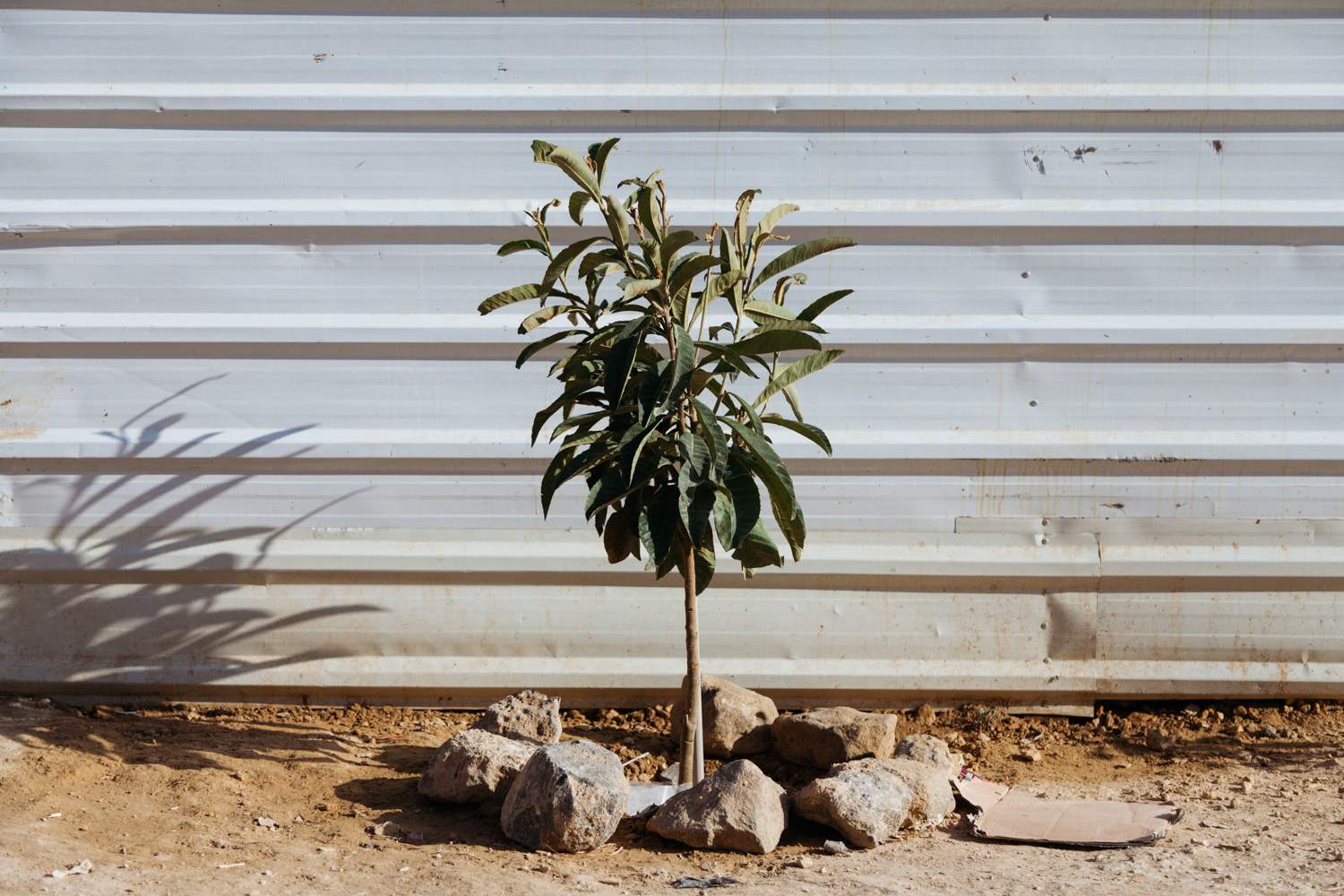The wall defining the north limit of the camp. Zaatari is a refugee camp in northern Jordan, close to the Syrian border. Since its opening, it has been gradually evolving into a permanent settlement.
Mosque at section D7.
Women walk by Champs Elysée, main avenue in Zaatari, where all the shops are located.


Market street, a place where many small business have been established, since the inauguration of the camp.
Children trying to catch wifi signal. The only spot with available internet is next to UN main office inside the camp.
Safaa Hasam, 8 years old, washing dishes. Zaatari is a refugee camp in Jordan, that has been gradually evolving into a permanent settlement.
A young boy stands by his shelter entrance.
Nassel Ali Al Hariri, 55 years old, he arrived in the camp on 2011 after his house was destroyed. His children died from a barrel bomb dropped by the Syrian government, forcing him to flee into Jordan.
Mohammed, from Homs, 46 years old, father of 3. Used to work dealing cars for a company in Syria. Arrived in Zaatari in 2013. The shadow cast in his body is from his eldest son.
Despite the harsh conditions inside the camp Mohammed says he's grateful for the Jordanian people to have received him and his family.
Siham, 24 years old, from Homs. She came to the camp with his husband, who defected from the Syrian Army, the reason why they escaped to Jordan.
Amna Abdul Kareem (75), Salam (5) and Rania (13) are members of a family coming from Da'ara in 2013. The entire family crossed the border by foot, when the conflict in Syrian reach their neighborhood.
Bashar Ali, 23 years old, from Da'ara. Arrived in Zaatari in 2012, crossing the border legally. He got married 6 months after his arrival in Zaatari, where he met his wife. She gave birth to a little girl in September 2016.
Tea time for a refugee inside a shelter in Zaatari. He asked not to show his face, as part of his family are still in Syria. He was a government worker in Damascus.

